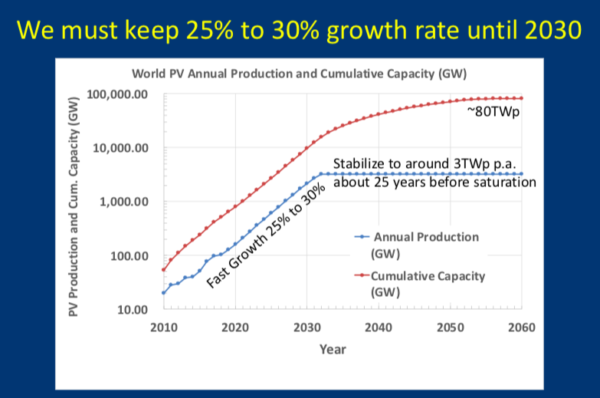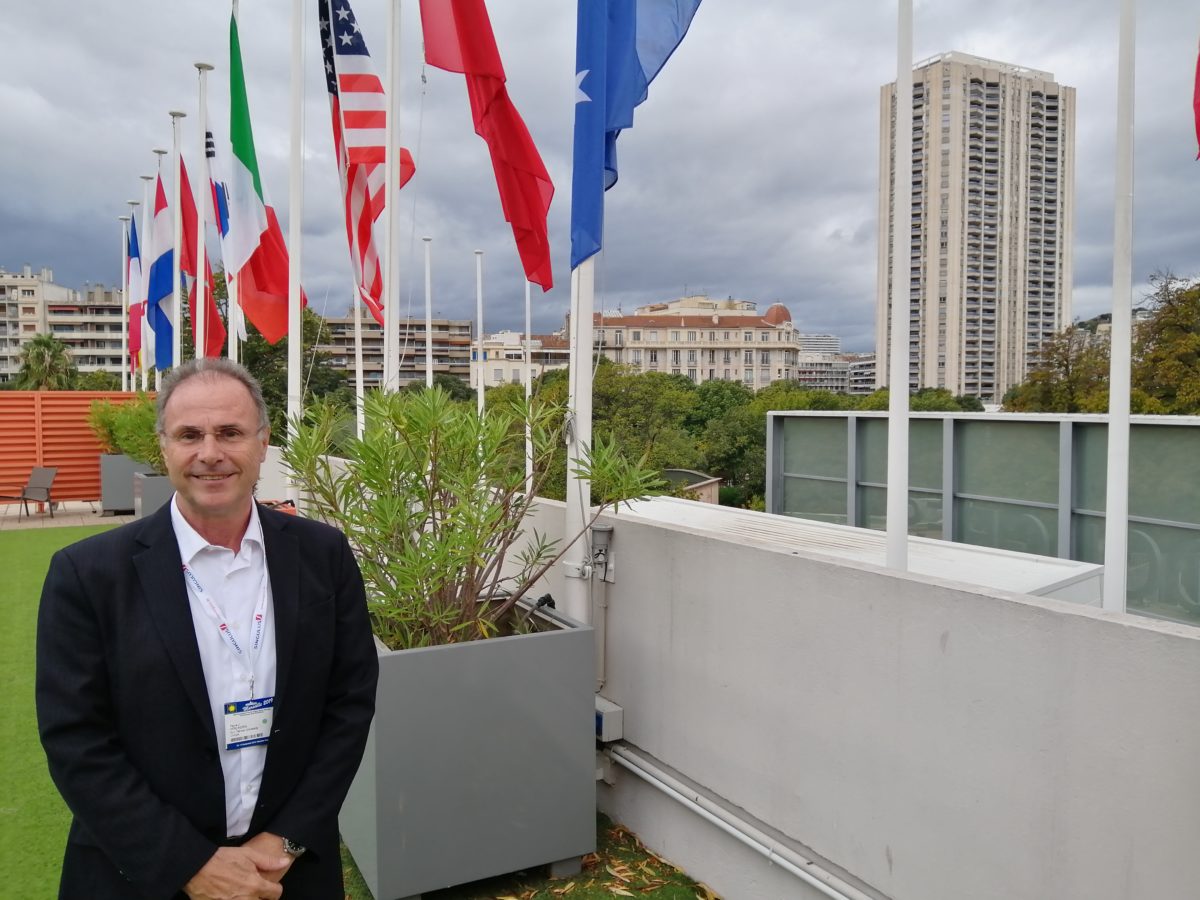With PV technology, in his words, in a period of great “acceleration”, Pierre Verlinden stresses the need to scale solar to not only meet the challenge of climate change but to build a sustainable PV manufacturing industry on a terawatt scale.
On the technical front, he says we have the technologies already to build the transformational solar industry of the future.
pv magazine: What does receiving the Becquerel prize mean to you?
Pierre Verlinden: It means that I’ve been very lucky to work with a lot of great people. And they recognize my passion. What was said in the introduction to the [award] presentation was very true: PV has been a real addiction for me. I’ve been 40 years in this sector, worked with great people and with them achieved great things. I feel very humble to be able to work with so many smart and clever people.
How would you describe the PV technological landscape in 2019?
What I see in technology is a lot of acceleration in development. Technology in PV has been slow to implement innovations, novelties and new designs. We see a significant acceleration [today]. PERC [passivated-emitter rear contact technology] has been proposed 30 years ago and only came to the market three or four years ago. Since then we see a lot of innovation in modules: shingling, half cells, larger wafers – although we started talking about 200mm wafers in 1980. But now there is also bifacial and all of those things happening very quickly and it’s great.
Also, people are talking efficiency now; really focusing on efficiency and focusing on improving the performance. We are getting very, very close to the theoretical single junction silicon physical limit. And people are excited to go beyond that with things like tandem cells.
I am very happy to see that people focus on efficiency and performance, and LCOE [levelized cost of energy] also, instead of just focusing on price down. This is a change. We will see a lot more of mono [silicon] than multi, a big push in HJT [heterojunction cell tech]. Trina is producing n-type TOPCon [tunnel oxide passivated contact], which is great to see, and companies like Oxford PV are starting to do demonstrations of modules of perovskite on silicon. Five years ago at [trade show] SNEC, I said that we would see demonstration of tandem modules in the timeframe to today and no-one believed me.
And what about the market situation, how do you see where we are today?
It’s very exciting but it’s scary, because people think that the module is so cheap now and we are at parity in most parts of the world so the problem is solved and now there will be an explosion. But what we see is a [market] slowdown. Instead of the 30% growth per year, now we see 10-20% and this is not good. Because we need to tackle climate change by the installation of around 80 TW of cumulative PV. To get to 80 TW we can do it with 10 to 15 to 20% growth, but the problem is that we have to grow so much the annual production capacity that when the market saturates there will be a major slowdown and that will kill the industry. What will be left is the replacement of the modules that were produced 20-30 years earlier. That will be a transition from a 9 TW [annual market] to 100 GW.
Can you explain that idea a little more?
Well, if we grow at 10-20% then we reach 80 TW in 2055, for example. At that time, the production capacity is roughly 9-10 TW annually. But if we can reach that 25 years earlier, if we grow very fast and stabilize around 3 TW, we can stabilize 25 years before the market saturates and then the market stays at 3 TW. But we need to keep growing quickly, right now, for another 10 years. After that we are safe.

Image: Pierre Verlinden
What PV technologies will we need at that stage?
The big question is, which technology are we developing? The technologies that will be developed in 20 years will be too late. When we arrive at 2030 or 2040, when the market is stable, there will be room for 3-4 different technologies – there will be no room for new technologies any more. They will not make it.
Any technologies that we are developing right now we need to be ready in the next 10 years, after that it will be too late. It is exciting to see these new technologies coming but people need to realize that they shouldn’t invent a new technology that will take 20 years to come to market because it will come too late – we don’t need that.
So, you’re saying that we have today the fundamental solar technologies we will need in future?
We can do it with the technology we have. The efficiency is not a problem, cost also, growth also not a problem – because the cost of [production equipment] capex [capital expenditure] has come down in the last years. The big problem is apathy. There is no sense of urgency. Greed is also a problem – people want ROI [return on investment]. And then there is [political] populism, and things like that.
You really need to tell people: ‘We have made it, it’s wonderful and the industry can survive and it’s a great industry.’ But we have a big problem and the world needs a “war cabinet” against climate change. This is a leadership and people to coordinate what needs to be done. That war cabinet needs to tell the PV industry that we need to grow at 25-30% annually. And other industries, like the car industry, need to rapidly invest in electric mobility.
What’s next for you?
I’ve been a device physicist for many years and have done many, many things, and now I’m looking at the industry and what I can do.
Seventy-five per cent of my work is volunteering, like as a part of the international advisory board at EU PVSEC. I organize the silicon PV conference [March 30-April 3] in China next year. All of that is volunteer work. I help the Chinese PVSEC conferences, PVSEC also. I’m also assisting with writing books and articles so this is also my volunteer part.
The rest of my time I spend on the board of Oxford PV and BT Imaging. And I do consulting also – with Trina for the moment – on a regular basis.
This content is protected by copyright and may not be reused. If you want to cooperate with us and would like to reuse some of our content, please contact: editors@pv-magazine.com.




By submitting this form you agree to pv magazine using your data for the purposes of publishing your comment.
Your personal data will only be disclosed or otherwise transmitted to third parties for the purposes of spam filtering or if this is necessary for technical maintenance of the website. Any other transfer to third parties will not take place unless this is justified on the basis of applicable data protection regulations or if pv magazine is legally obliged to do so.
You may revoke this consent at any time with effect for the future, in which case your personal data will be deleted immediately. Otherwise, your data will be deleted if pv magazine has processed your request or the purpose of data storage is fulfilled.
Further information on data privacy can be found in our Data Protection Policy.